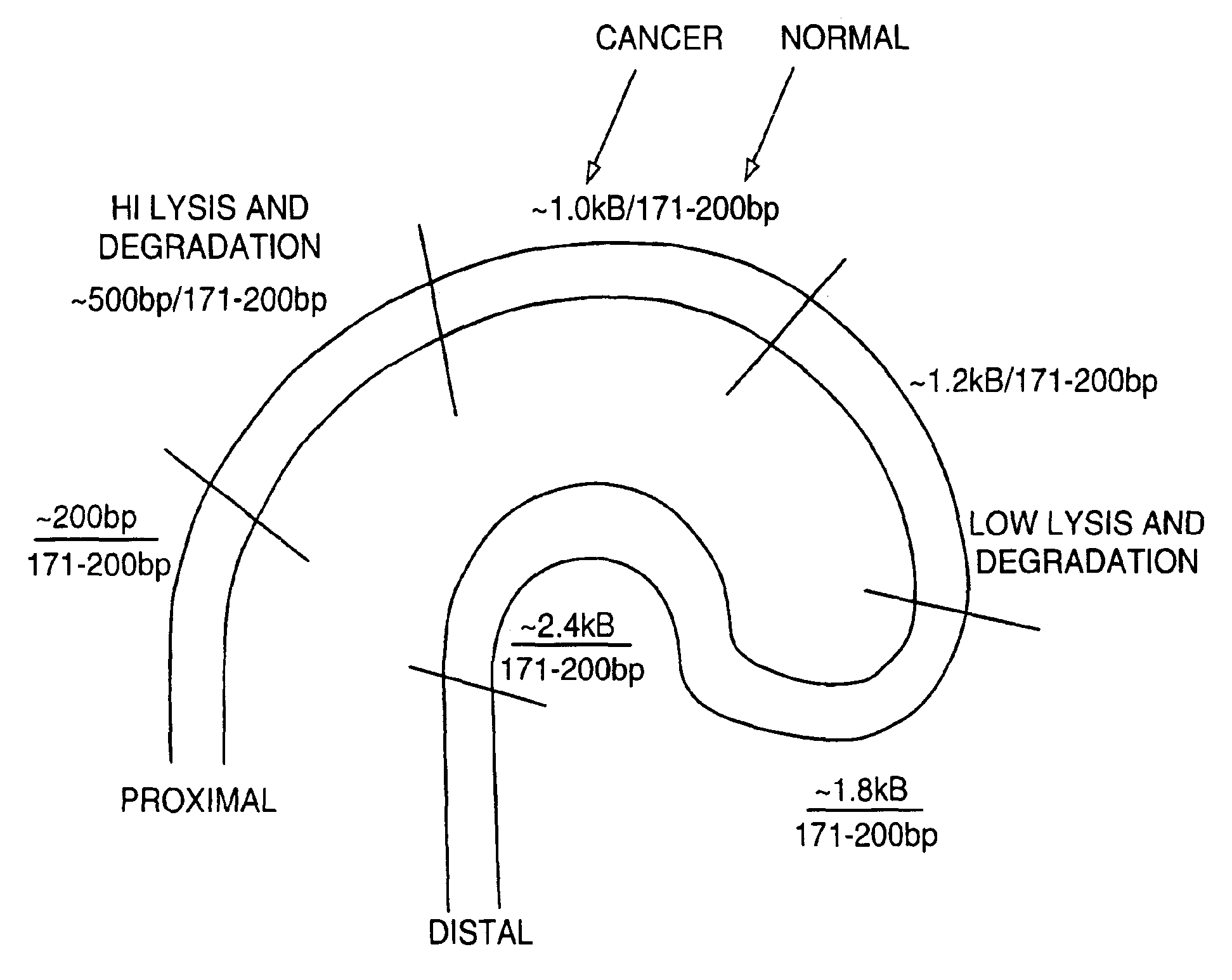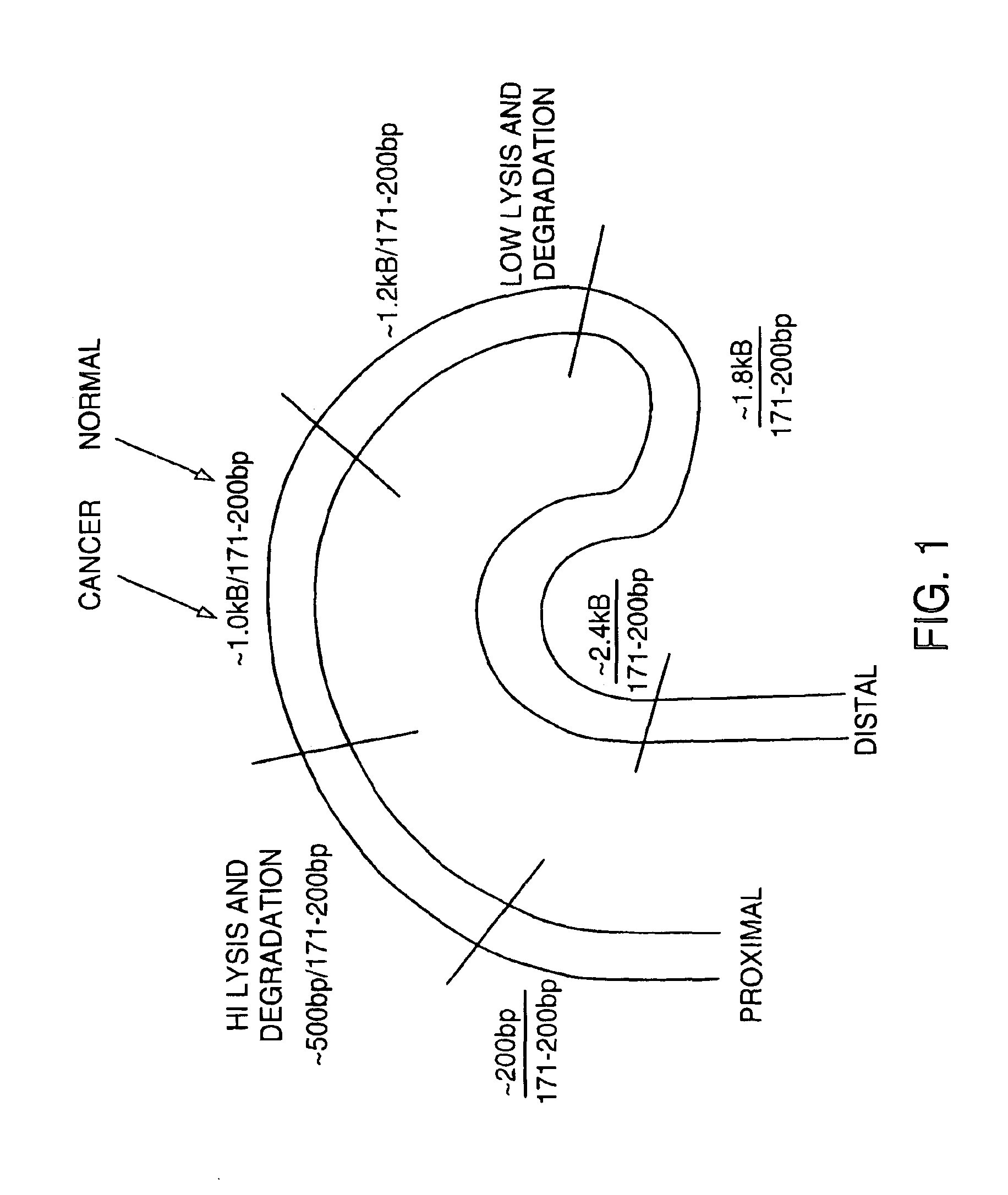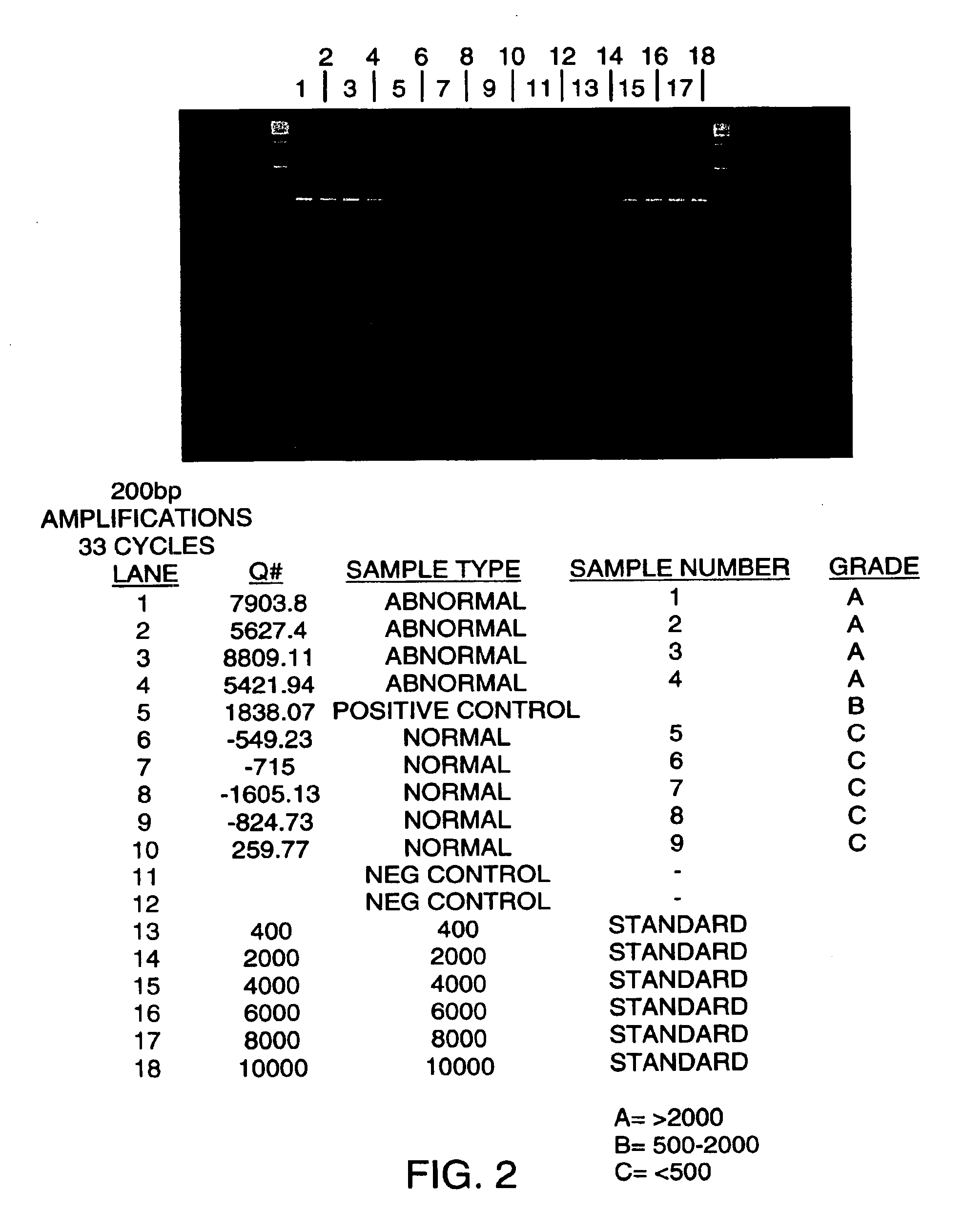Methods for detecting nucleic acids indicative of cancer
- Summary
- Abstract
- Description
- Claims
- Application Information
AI Technical Summary
Benefits of technology
Problems solved by technology
Method used
Image
Examples
examples
[0050]Experiments were conducted to determine whether characteristics of amplifiable DNA in stool were predictive of cancer or precancer in patients from whom stools samples were obtained. In the first experiment, the amount of amplifiable DNA was measured in each of several stool samples using PCR amplification to detect DNA fragments in the sample of at least 200 base pairs in length. The second experiment determined the amount of long (greater than 200 base pair) fragments in the same samples, and then to determine ratios of long product to short product.
I. The Use of Amplifiable DNA as a Marker for Cancer or Precancer
[0051]Stool samples were collected from 9 patients who presented with symptoms or a medical history that indicated that a colonoscopy should be performed. Each stool sample was frozen. Immediately after providing a stool sample, each patient was given a colonoscopy in order to determine the patient's disease status. Based upon the colonoscopy results, and subsequent...
example 2
[0055]An experiment was conducted that was essentially identical to the one described above in Example 1, but forward and reverse primers were placed such that fragments of about 1.8 Kb and above were amplified.
[0056]DNA was prepared as described above. Forward and reverse primers were spaced so as to hybridize approximately 1.8 Kb apart on three different loci (Kras, exon 1, APC, exon 15, and p53 exon 5). Thirty-three rounds of amplification were performed, and the resulting DNA was placed on a 5% acrylamide gel. The results are shown in FIGS. 9-11. As shown in the Figures (which show results from three separate experiments to amplify and detect“long” product), samples from individuals having cancer or precancer produced large amounts of high-molecular weight (in this case 1.8 Kb and above) DNA; whereas samples from patients who did not have cancer or precancer produced no DNA In the range of about 1.8 Kb and higher. Thus, the presence of high-molecular weight DNA was indicative of...
PUM
| Property | Measurement | Unit |
|---|---|---|
| Length | aaaaa | aaaaa |
Abstract
Description
Claims
Application Information
 Login to View More
Login to View More - R&D
- Intellectual Property
- Life Sciences
- Materials
- Tech Scout
- Unparalleled Data Quality
- Higher Quality Content
- 60% Fewer Hallucinations
Browse by: Latest US Patents, China's latest patents, Technical Efficacy Thesaurus, Application Domain, Technology Topic, Popular Technical Reports.
© 2025 PatSnap. All rights reserved.Legal|Privacy policy|Modern Slavery Act Transparency Statement|Sitemap|About US| Contact US: help@patsnap.com



